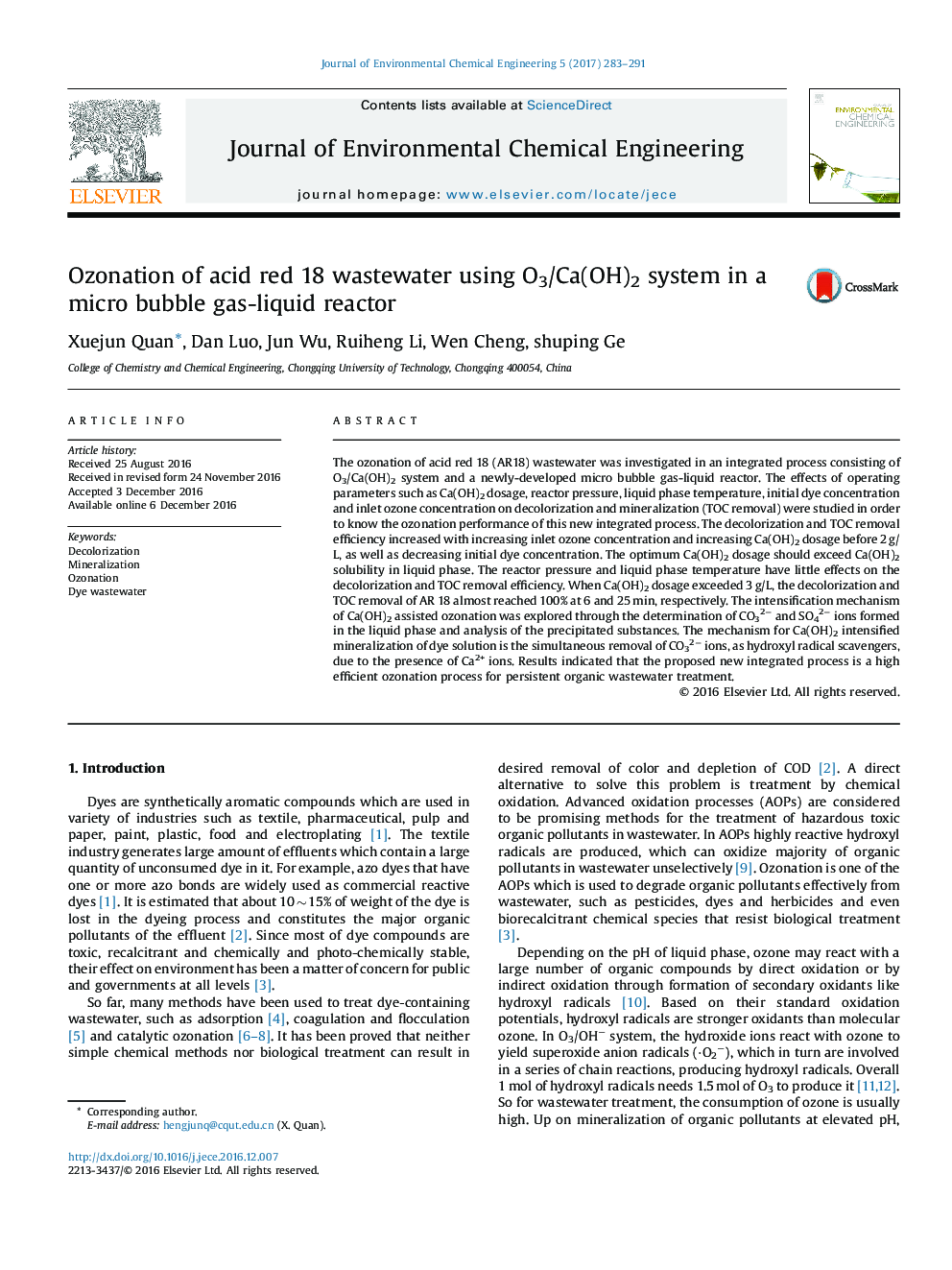| Article ID | Journal | Published Year | Pages | File Type |
|---|---|---|---|---|
| 6477333 | Journal of Environmental Chemical Engineering | 2017 | 9 Pages |
The ozonation of acid red 18 (AR18) wastewater was investigated in an integrated process consisting of O3/Ca(OH)2 system and a newly-developed micro bubble gas-liquid reactor. The effects of operating parameters such as Ca(OH)2 dosage, reactor pressure, liquid phase temperature, initial dye concentration and inlet ozone concentration on decolorization and mineralization (TOC removal) were studied in order to know the ozonation performance of this new integrated process. The decolorization and TOC removal efficiency increased with increasing inlet ozone concentration and increasing Ca(OH)2 dosage before 2 g/L, as well as decreasing initial dye concentration. The optimum Ca(OH)2 dosage should exceed Ca(OH)2 solubility in liquid phase. The reactor pressure and liquid phase temperature have little effects on the decolorization and TOC removal efficiency. When Ca(OH)2 dosage exceeded 3 g/L, the decolorization and TOC removal of AR 18 almost reached 100% at 6 and 25 min, respectively. The intensification mechanism of Ca(OH)2 assisted ozonation was explored through the determination of CO32− and SO42− ions formed in the liquid phase and analysis of the precipitated substances. The mechanism for Ca(OH)2 intensified mineralization of dye solution is the simultaneous removal of CO32− ions, as hydroxyl radical scavengers, due to the presence of Ca2+ ions. Results indicated that the proposed new integrated process is a high efficient ozonation process for persistent organic wastewater treatment.
